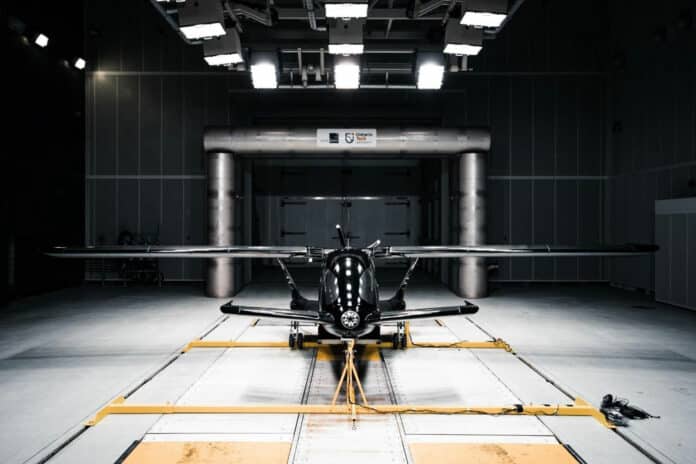Horizon Aircraft, an ambitious aviation startup, has successfully completed initial transition flight testing of its half-scale Cavorite X5 eVTOL technology demonstrator.
The aircraft has completed a series of aerodynamic tests and transition flight tests at the world-class ACE Climatic wind tunnel with our 50% scale prototype. The team at Horizon tested at wind speeds over the aircraft’s 80 km/h transition speed.
“After several months of successful hover flight testing, this marks the exciting beginning of our transition flight test program,” Horizon Aircraft announced on Twitter.
Cavorite X5 is a hybrid-electric VTOL meant to carry four passengers plus the pilot, with no emissions. The eVTOL features a patented fan-in-wing vertical lift system with 16 ducted fans built into the wing and canard. Hybrid-electric propulsion enables it to cover up to 500 km (270 nautical miles) and reach a top speed of 450 km/h (250 knots).
The company says its patented hybrid eVTOL concept allows the aircraft to fly 98% of its mission in a very low-drag configuration like a traditional aircraft and is one of the only eVTOL aircraft currently able to do so. Flying most of the mission as a normal aircraft is safer, more efficient, and will be easier to certify than radical new eVTOL designs.
The Cavorite X5 will start out as a hybrid VTOL that can operate in both Short Takeoff and Landing (STOL) and Conventional Takeoff and Landing (CTOL) modes. After a successful transition flight test in the wind tunnel, Horizon plans to begin transition flight tests outdoors for its full-scale hybrid aircraft by 2025.
“Aircraft performance exceeded our expectations. We explored forward speeds of up to almost 100 km/h, measuring aerodynamic forces, control authority, and mechanical system function with the wings open at varying fan speeds,” said Brandon Robinson, CEO of Horizon Aircraft.
“We were particularly happy with pitch and roll stability and control throughout the entire transition envelope, as well as the embedded fan performance. Having real-world test results match our detailed predictions was a further endorsement of our world-class engineering. We can now use these results to refine our CFD modeling and further de-risk the outdoor transition flight test program that is beginning soon.”
